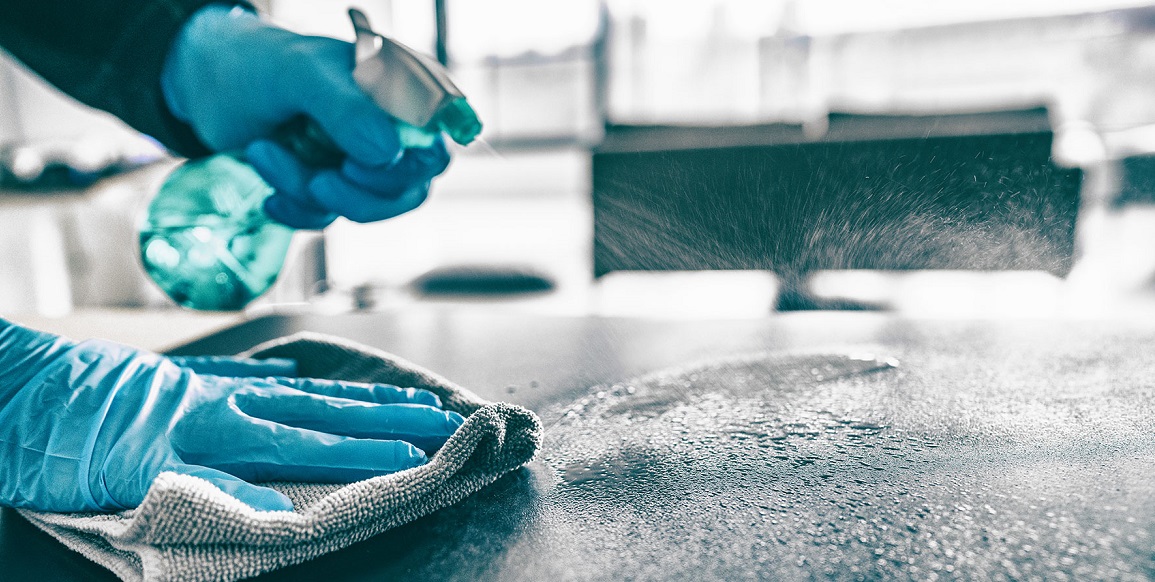
Safety and Hygiene in the Workplace #2: Cleaning Your Facility
The government have announced a relaxation of the guidelines around working on site for many industries. So, we've complied some handy information to help you keep your facility clean and hygienic during the Coronavirus crisis.
Given how infectious the COVID-19 virus is, there is now an even greater focus on keeping workplaces clean. The government’s recent announcement of a phased relaxation of social distancing rules means that people are gradually returning to work. Therefore, it is more important than ever that we, as employers, do all we can to ensure our facilities comply with guidelines around hygiene and cleaning. There is a wealth of information out there, so to help you protect your workforce quickly and effectively, we have we have compiled a selection of the measures that we think are most relevant. We have also given a few examples of things we are doing here at A-SAFE to keep our essential workers safe at this time.
In this guide we will explore:
- How cleaning your facility can help in the fight against COVID-19
- The appropriate cleaning products and equipment
- How to implement enhanced cleaning measures
- Areas in a busy work environment that require additional attention
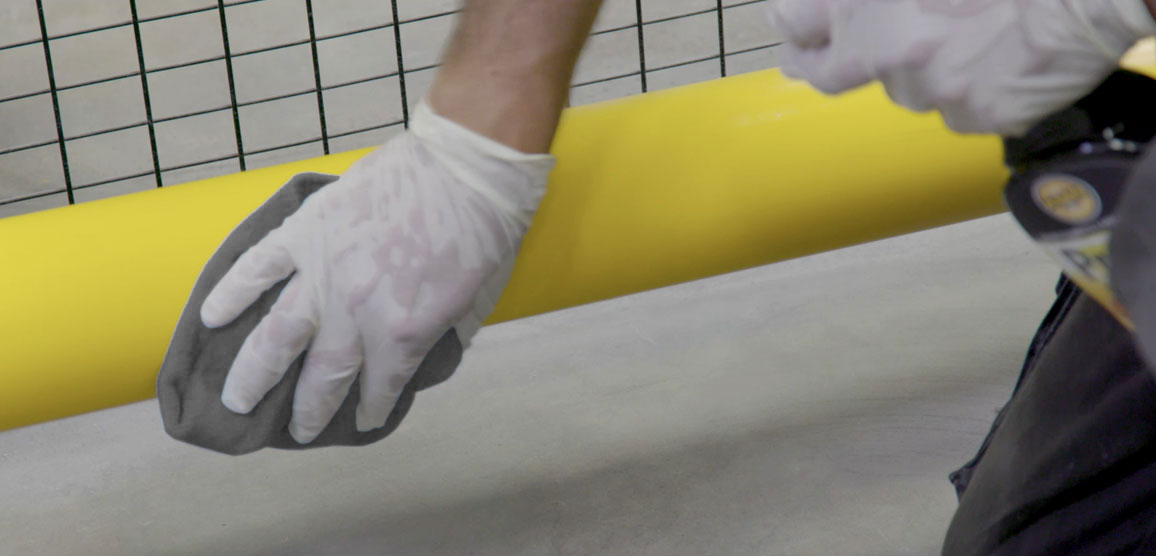
How effective cleaning can help limit the spread of COVID-19
Coronavirus spreads easily between individuals through close contact and airborne particles from coughs or sneezes. It can also be contracted through contact with surfaces that are contaminated with the virus. As these government guidelines suggest, cleaning your work areas and surfaces can help to reduce the chance of infection.
At A-SAFE, we have performed a series of risk assessments to highlight priority areas and touchpoints around our factory, warehouse and offices. These are the surfaces and areas with which our employees are most likely to come into physical contact. Therefore, they need to be cleaned and disinfected more frequently.
The current situation poses a lot of unknowns and variables, so it is important to be reactive. As our Health and Safety Advisor, Jaroslaw Borek, explains, “Aside from the government guidelines, there is little research or evidence available to inform the risks we should be aware of, meaning we have to implement suitable and sufficient assessments to the best of our ability. However, as the guidelines change and adapt, so too will our risk assessments.”
How long does the virus remain on surfaces and objects?
The government states that “…in most circumstances, the risk is likely to be reduced significantly after 72 hours.” Therefore, if you believe the virus has been introduced to an area or part of your facility, it is crucial that you isolate this area for the suggested time and then perform a deep clean.
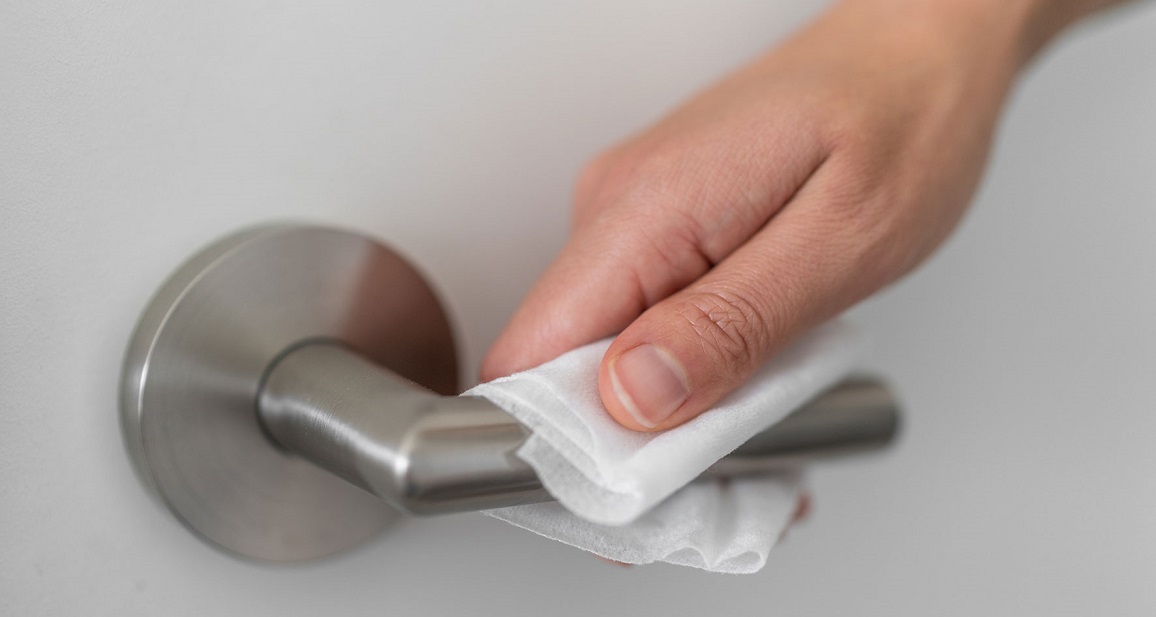
Are there any areas of my workplace that require more frequent cleaning?
Areas that will require more cleaning are those with high levels of contact, such as bathrooms, guide handrails, tables, door handles and office equipment such as telephones and keyboards. This is known as touch-point cleaning.
Government guidelines state: “Public areas where a symptomatic individual has passed through and spent minimal time, such as corridors, but which are not visibly contaminated with body fluids can be cleaned thoroughly as normal.”
Are strict cleaning routines only important if areas have come into contact with someone carrying the virus?
The UK government and the World Health Organisation have stated, it is important to maintain enhanced cleaning processes regardless of whether cases have been found on site or not. As customers who have visited our site will already know, at A-SAFE we have always maintained a very high standard of hygiene at all times.
Some of our standard cleaning processes include:
- A daytime cleaner focusing on offices, kitchens, toilets and corridors
- A team of evening cleaners who perform a deep clean across our offices
- Shift cleaners on the production line and in the warehouse who clean machines and equipment regularly
- Informational areas encouraging all staff to clean up after themselves, load dishwashers, etc.
- Rigorous implementation of 5S for an organised, clean and productive workplace
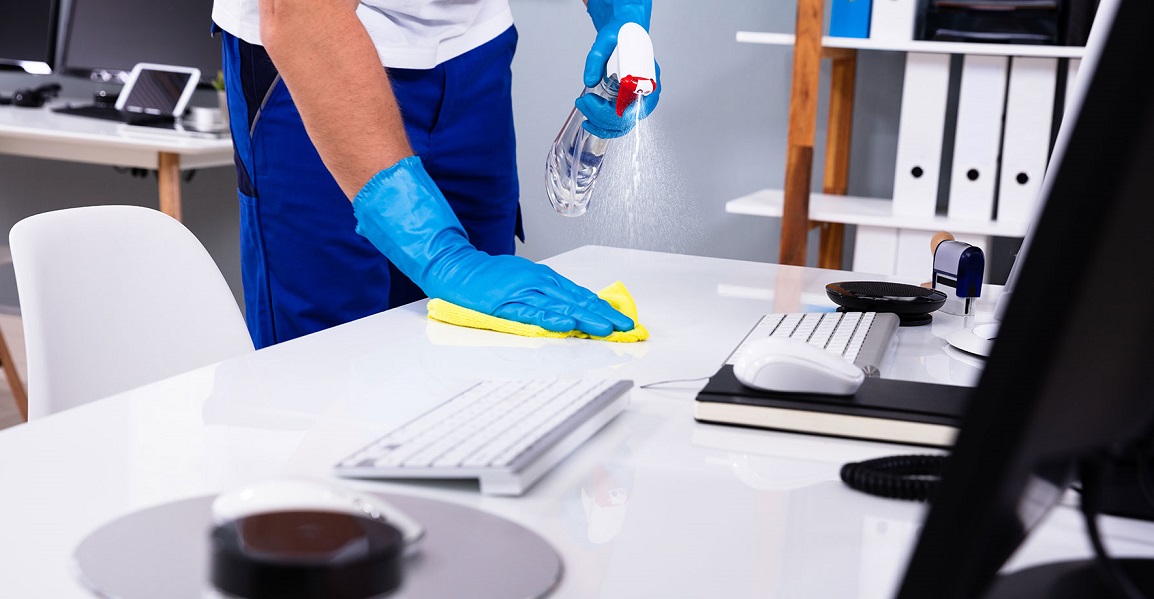
How has A-SAFE increased cleaning processes on site?
Since the Coronavirus crisis took hold, we have done all we can to enhance our cleaning processes even further. This includes:
Regular cleaning rotas
Our cleaning staff continue to thoroughly clean our offices, toilets, shower rooms and communal areas such as canteens and kitchens. This includes cleaning and disinfecting all areas and mopping floors. In addition to this, we have introduced a series of cleaning rotas for each office that focuses specifically on any touchpoints identified in the risk assessments.
These rotas have a regular cleaning cycle of every hour, so staff can share the responsibility of maintaining hygiene in their office throughout the day. Each time someone cleans down these touchpoints, they add their name along with a timestamp to the rota, so we can be sure they are being maintained.
Download a PDF copy of our COVID-19 cleaning rota
Handwash and sanitiser stations
We have converted existing toilets, washrooms and drink-making facilities into dedicated hand wash stations that are clearly signposted around our offices, warehouse and shop floor. We have also installed hand sanitizer stations at each entrance and exit with visual reminders to staff. A member of management also reminds staff to wash their hands at regular intervals during their shift.
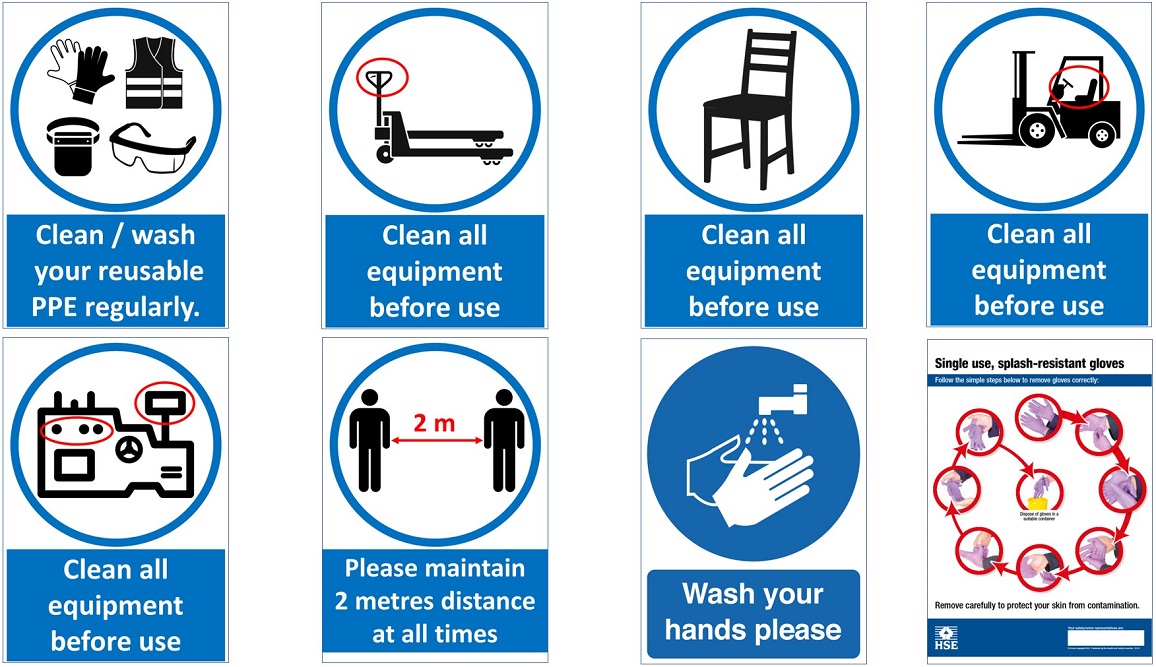
Proper cleaning stations on the shop floor
We have equipped all machine operators with a combination of anti-bacterial wipes and spray so that they can clean down their machines frequently – with a focus on key touchpoints such as screens, dials, buttons and handles.
We have installed new cleaning stations for forklift trucks and pallet trucks, so that each operator can wipe down their vehicle every hour.
Effective educational displays, signposts and information
We have created additional information and educational literature to educate our workforce on how best to proceed. By providing instructions on a range of things, such as how to effectively clean their equipment, we can ensure we meet the strict hygiene standards required.
An example of our health and safety literature:
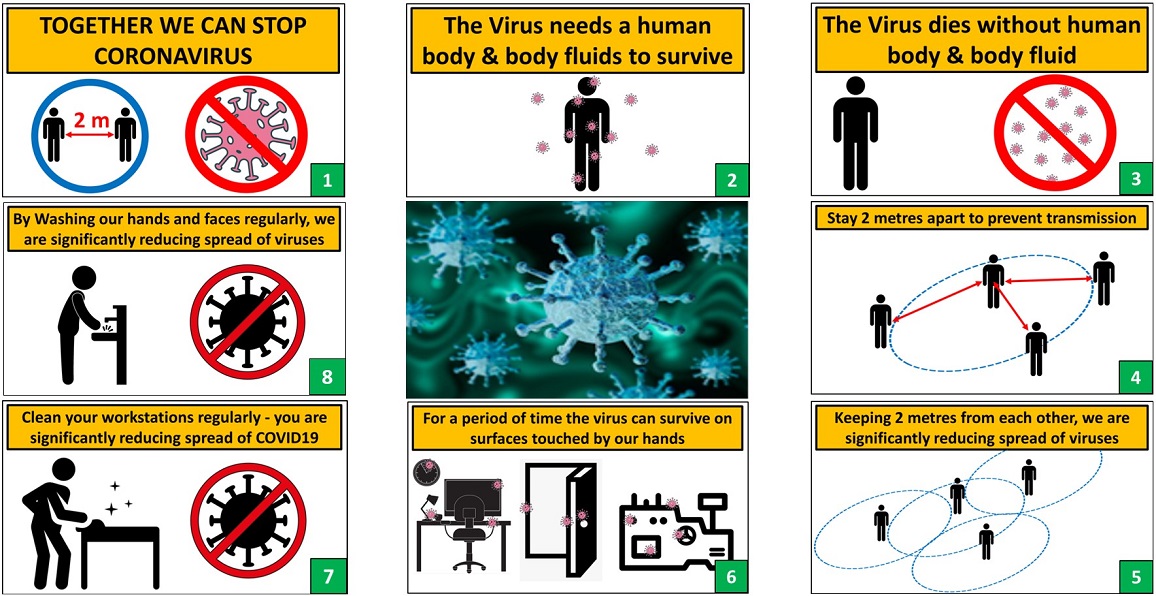
How do you implement these changes to cleaning processes while observing social distancing?
All the procedures outlined above have been implemented in line with a range of social distancing measures that include:
- Smaller teams on site
- One-way systems in the factory and warehouse
- Removing desks and seats to create appropriate distancing between seats in offices and canteens
- Staggered breaktimes and shift patterns to limit social contact
- 2-metre floor markings
- Educational wall displays and free-standing signposts to inform staff of new measures
- Communications by email, intranet and internal social channels
- Regular communications and video messages about site changes from directors and MDs
Do I need to wear special equipment to clean my workplace?
At A-SAFE, we provide our cleaning staff with all relevant PPE, including disposable gloves, disposable aprons and disposable masks, these are then thrown away after their initial use.
While we do provide masks, we believe they are only necessary in instances where cleaning or maintenance require close contact with an additional team member. As Tracy Allan, who manages our cleaning teams, explains: “It’s important that staff feel safe at all times, so the correct PPE is always available. It is down to personal preference as to whether cleaners use it or not, providing they are already maintaining 2-metre distancing.”
For any non-disposable equipment, we ensure they are cleaned thoroughly daily. Tracy says, “All mops and any non-disposable cloths are used once and then washed at a high temperature each day to ensure they remain safe.”
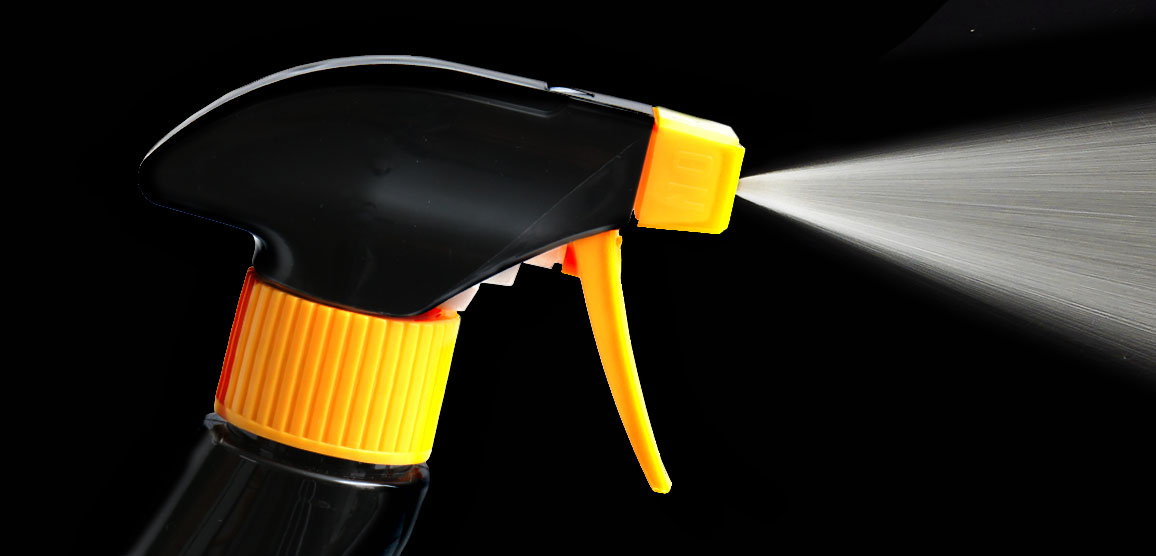
What should I use to clean surfaces and objects?
Normal household disinfectants are still effective in preventing the spread of the virus on surfaces as they contain the active ingredients needed to work. Scientific studies have also shown that steam and heat treatments can be effective against other strains of coronavirus infections.
We have continued to use the same cleaning products throughout the crisis, as they are still extremely effective. While we did consider using cleaning products of a higher concentration, we felt it was important to maintain the same levels to avoid our cleaning staff experiencing any unnecessary irritation or adverse reactions.
Disposing of waste
We have produced literature for employees that details how best to remove and dispose of their cleaning equipment – which includes The Health and Safety Executive’s guide to proper glove removal. If you believe any equipment has been contaminated with the virus, it is crucial that all waste is double bagged, clearly labelled and stored in a secure area – away from others - for at least 72 hours before being disposed of in the normal way.
Cleaning Your Facility | Summary
While it is impossible to fully prevent the spread of COVID-19 in any workplace or facility – especially in essential industries with a high volume of traffic– it is important to do all we can to limit the spread where possible. A strict and enhanced cleaning process is the best way to protect staff and maintain production levels.
For more information, please visit the UK government’s full COVID-19 guidelines. And as ever, if there is anything A-SAFE can do to help you protect your workforce and infrastructure, call us on (443) 776-3472 or contact us via the form below.
